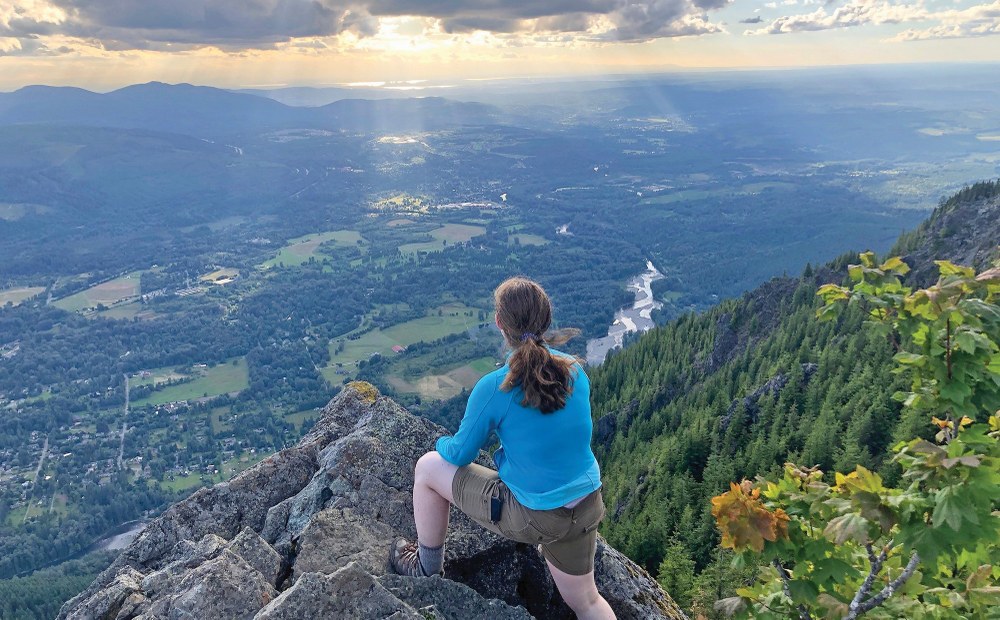
One of the greatest gifts The Mountaineers gives is the ability to be safe while recreating outdoors. From urban adventures to technical climbs, we champion safety through interactions, hard-skills, and quality standards. Yet when we have that dreaded “worst day” in the mountains, our sense of safety can shatter, and there are often deeper internal wounds that take longer to heal.
Since the death of my best friend in a climbing accident six years ago, I’ve had the privilege of empowering others to be safer through Breaking the Halo presentations (as part of the Leadership Development Series) and subsequent discussions with survivors of traumatic events and loss. Over the years, I’ve noticed shared experiences of how our sense of safety shifts following a traumatic event:
We may never feel safe again. And that is alright. Experiencing trauma can make us want to avoid places that hold memories, good and bad. Our relationship with the outdoors may change; we may avoid certain seasons or environments, and our interests may change. Respecting these changes is important. Never force someone back into a place or activity that may be re-traumatizing.
We may try to reclaim our sense of safety. Rather than avoiding painful memories, we may wish to intentionally go to the place or return to the activity that caused the trauma. There is no expected process or timeline for doing this, but it generally happens after the initial shock and grief have settled. If you see dangerous or risky behavior in a friend processing trauma, speak up and try to support them in their journey.
Our risk tolerance may show extremes. At one end, our risk tolerance may drop to where a short hike causes anxiety. We might overprepare for worst case scenarios, underestimate our abilities, or cancel last minute. At the other end, there may be a new sense of confidence bordering on invincibility. We might take on more challenging objectives, want to set personal records, and have a darker sense of humor about possible consequences.
We are navigating a new relationship with safety, risk tolerance, and boundaries. This can be a rocky process. Group dynamics may change, partnerships may develop or dissolve, and new friction points can appear. These adjustments can be challenging for everyone, but talking through these differences respectfully can help determine next steps. Try to address concerns around behaviors and avoid making things personal while navigating these changes.
We will never forget, but we will adapt. Even if we stop talking about what happened and don’t show signs or symptoms of trauma, the scars will always exist. How each person chooses to interact with the memories will be unique and may change based on the people we’re around, the places we go, the time of the year, etc. Being in control of the conversations can help us feel safer. Sometimes we want to talk, as it helps to share the story. We know it can be a lot – ask us to change the topic if you are not in a place to listen. Other times, we’d rather talk about anything else. Feel free to ask your questions, but respect if we don’t want to engage.
Safety requires us all to see something, say something, and know how to stand up for ourselves. This is as true for our inner sense of safety as it is for external factors. I hope these insights help you better navigate safety – in yourself and with those around you – following a traumatic event.
This article originally appeared in our fall 2024 issue of Mountaineer magazine. To view the original article in magazine form and read more stories from our publication, visit our magazine archive.
 Katjarina Hurt
Katjarina Hurt